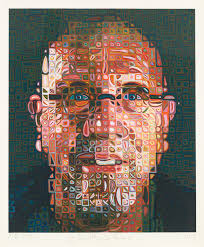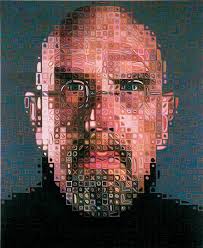Super realism, also known as photorealism or hyperrealism, is a genre of art that emphasizes meticulous detail to create paintings that resemble high-resolution photographs.

According to the Academy of Fine Art Germany, "Hyperrealistic" refers to works that create a lifelike replica of reality using extremely high-resolution photo references. The final product is indistinguishable from the reference. The aim of hyperrealist art is often to create a kind of false reality, and it goes a little further: they are practically a qualitative "improvement" in which shadows, lighting effects, surfaces and textures are represented more clearly than they are actually perceived.
Super Realism is an art form where most viewers, even professional artists, cannot tell whether they are looking at a painting or a photo. This genre demands an extraordinary level of skill and precision. Artists spend countless hours perfecting their paintings to replicate minute details, textures, and reflections. This dedication showcases their technical prowess and commitment to their craft.
Super realism may sound like a modern art style but it actually emerged earlier and reached its greatest growth in the late 1960s and early 1970s, partially as a reaction against abstract expressionism and minimalism. It can be seen as a reflection of contemporary society’s fascination with media, technology, and precision. The genre's focus on urban scenes, consumer goods, and everyday objects offers a snapshot of the essence of an era. It could the intellectual, cultural, ethical, and political climate of an era. If we dig a little deeper beneath the technical excellence, there are super realistic paintings that challenge the depth of its art concept. Artists like Chuck Close and Richard Estes, for example, often imbue their works with deeper conceptual significance, challenging viewers to question what they see.
Richard Estes
Richard Estes is an American artist, best known for his photorealist paintings. He is primarily known as a painter of urban scenes of American cityscapes.
Chuck Close
Chuck Close is known for his innovative conceptual portraiture, depicting his subjects, which are transposed from photographs, into visual data organized by gridded compositions.

Super realism painting often command high prices in the art market. The demand for these artworks is driven by collectors’ appreciation for their technical difficulty and the time investment required to create them, and this commercial success adds another layer to their art value.
Leng Jun
Leng Jun is a Chinese contemporary artist best known for paintings and drawings that appear like photographs. This oil paintings of a women are considered the most realistic in the world.

Why Super Realism Creates WOW Effect
The visual impact of super realism can be profound. The lifelike quality of these paintings often evokes a sense of wonder and astonishment in viewers, making them engage more deeply with the artwork. Primarily, it plays with the viewer’s perception, challenging them to question what is real and what is a representation. Viewers tend to look more closely and think more deeply about the nature of perception and representation.

Imagine yourself looking at a picture and you cannot differentiate between reality and man-made. We call this “Defying Expectations”. When people see a painting, they typically expect a certain level of abstraction or stylization. Super realism defies these expectations by presenting images that look uncannily real. This unexpected verisimilitude surprises viewers, creating a sense of wonder and admiration for the artist’s ability to transcend the usual boundaries of painting.
In a world dominated by digital media and high-resolution imagery, super realism resonates with contemporary experiences and expectations. The ability of super realistic art to mirror the photographic clarity of modern technology can make it particularly relevant and impactful in today's visual culture.
On Contrary, Why It Is Not Prioritised by Some Artists?
In some contexts, there's a critique of realism as being overly focused on replicating the physical world without adding deeper layers of meaning or interpretation. For many artists, the purpose of art is not just to replicate what can be seen with the naked eye, but to convey personal experiences, emotions, or messages. Some artists and critics argue that art should challenge perceptions and provoke thought rather than simply mimic reality.
Some artists may prefer to explore different styles and techniques beyond realism to express their creativity and personal vision. Abstract, impressionistic, or surrealistic styles, for example, offer unique ways to convey emotions or concepts that may not be achievable through realism alone.
Besides, artistic movements throughout history have often sought to push boundaries and challenge established norms. Experimentation with new techniques, styles, and concepts is essential for the evolution of art as a form of expression.

Would It Stop Artist From Growing Artistic Sense?
Painting in a style characterized by super realism, which involves rendering subjects with extreme detail and precision, may not inherently prevent an artist from growing their artistic sense. However, it can limit the expression of artist because it often prioritizes accurate representation over creative interpretation. While this can showcase technical skill, it may limit opportunities for experimentation and personal expression, hindering the development of a more nuanced artistic voice.
This topic was arguably causing stagnation of skills amongst artists. Focusing exclusively on one style, particularly one as technically demanding as super realism, may be one of the culprits in leading to a plateau in artistic growth. Artists who continually challenge themselves with new techniques, styles, and subjects are more likely to expand their skills and develop a broader artistic repertoire.
It has something to do with the perspective as well. While super realism can be impressive, it may limit an artist's exploration of abstract concepts, symbolism, or alternative perspectives that are not easily captured through hyper-realistic representation.
Is the Value of Art Determined by How Realistically It Is Represented?
Although art movements in the past have often emerged as reactions against super realism or hyperrealism, many art learners and artists, along with the general public, still tend to think that this style holds a higher status compared to other forms of art.

If this were the case, the world of art would be too narrow-minded to embrace the diversity of creation. While not all art is created equally in terms of time spent, talent involved, or cost of materials, art is fundamentally an expression of visuals, feelings, and emotions that should not be judged based on realism alone. Moreover, art captures the cultural, social, and political atmosphere of a specific time or place. Its value may stem from its historical significance or its role in a particular movement, regardless of its realism.
Should You Try Super Realism?

There are mixed opinions about painting super realism, and there is no right or wrong approach to achieving it.
Some people pursue it out of personal interest, while others do it for practical reasons, such as earning an income. If you have built a solid foundation in painting realism, super realism may be a challenge you want to undertake. For artists, life can feel too short when it comes to painting, as it often demands a significant amount of time. When considering super realism, take into account your personal interests, artistic goals, and skill set.
Conclusion
My view of art has evolved, I appreciate various painting styles, including realistic, creative, impressionistic works etc. There should be as many art forms as possible to celebrate the diversity of the art world. Artists who persist in expressing their own views and continue to grow are more important than conforming to the standards of art set by public viewers or galleries. I believe that being creative is the most important key to unlocking the door to the art world.

























Comments